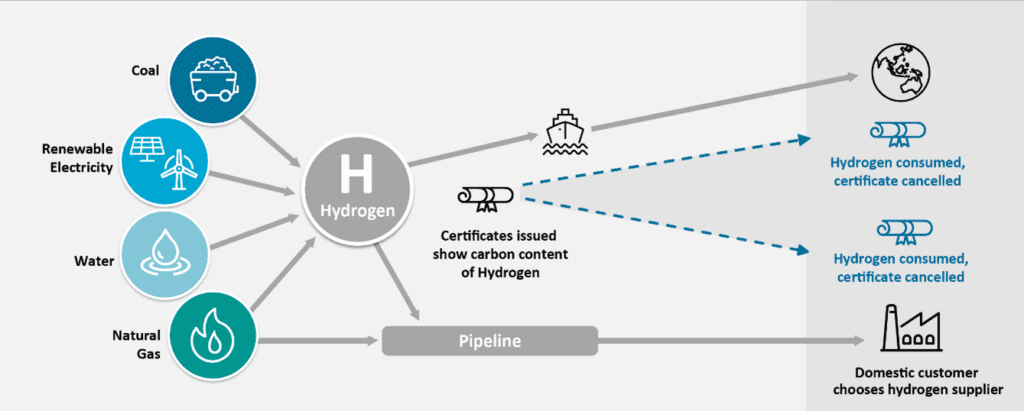What is a guarantee of origin scheme:
The purpose of a global Guarantee of Origin (GO) scheme is to provide key information about the carbon intensity of hydrogen produced along with method and location of production. It will enable transparency and certainty about the amount of carbon associated with each kilogram or tonne of hydrogen supplied.[1].
The GO Scheme is technology neutral and will replace the existing approach, which is based around colours, but does not represent the genuine carbon intensity of the hydrogen produced. A ‘well-to-gate’ system boundary is expected for the first iteration of the GO Scheme.
The scheme will align with the emissions accounting methodologies and standards set out by the International Partnership for Hydrogen and Fuel Cells in the Economy (IPHE[2]).
Australia represented by the Department of Climate Change, Energy, the Environment and Water, is playing a leading role in the development of the GO scheme. This will ensure Australia’s hydrogen GO framework will be robust, globally recognised and supported by the local market.
Once established the scheme will enable Australian businesses to sell verified low emissions hydrogen from renewable sources and fossil fuels with substantial carbon capture and storage, domestically and to the world.
This will account for upstream emissions (including those associated with raw material supply such as the extraction of fossil fuels, transport, storage and pre-processing) and emissions from hydrogen production and processing in tracking the emissions produced by the hydrogen product.

Guarantee of origin and the Hydrogen Energy Supply Chain (HESC) Project:
The HESC Project, “a world-first project to produce hydrogen in Victoria and export it to Japan”[3] is participating in the trials being led by the Clean Energy Regulator, that will inform the development of the Guarantee of Origin scheme for hydrogen.[4] Phase 1 of the trials began in March 2022, with phase 2 to run until June 2023.
The trials have been conducted across three hydrogen production pathways, i.e. coal gasification with CCS, Steam Methane Reforming (SMR) + CCS and water electrolysis.
The purpose of the trials is to settle the specifications for the GO Scheme, to create a transparent and credible certification for buyers of Hydrogen.
[1] https://www.dcceew.gov.au/energy/hydrogen/supply-chain-pilot-project
[2] https://www.cleanenergyregulator.gov.au/Infohub/Markets/guarantee-of-origin/trial-projects
[3] https://www.cleanenergyregulator.gov.au/Infohub/Markets/guarantee-of-origin